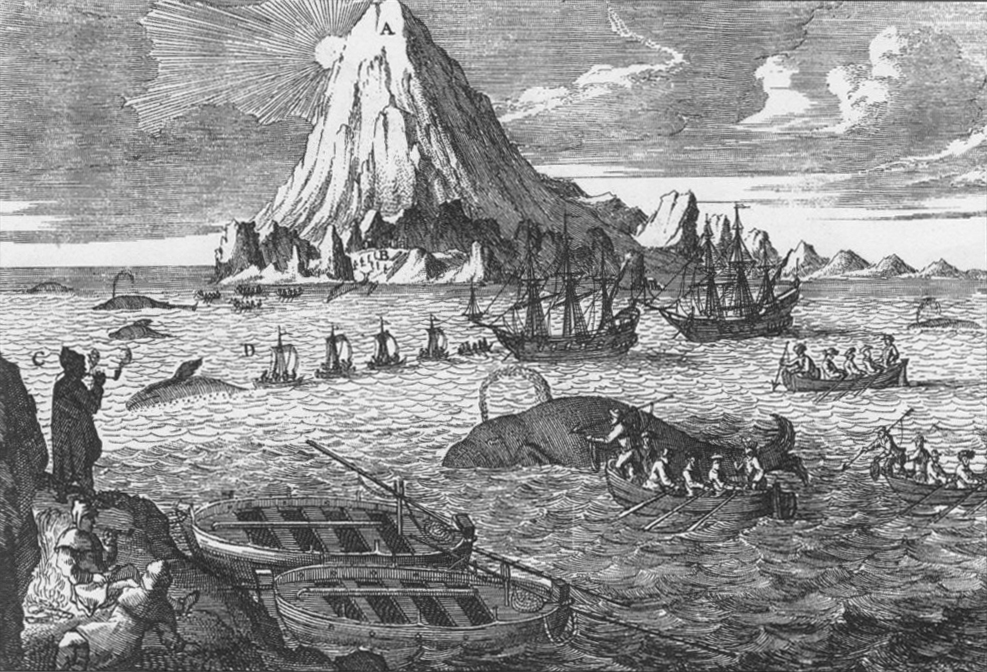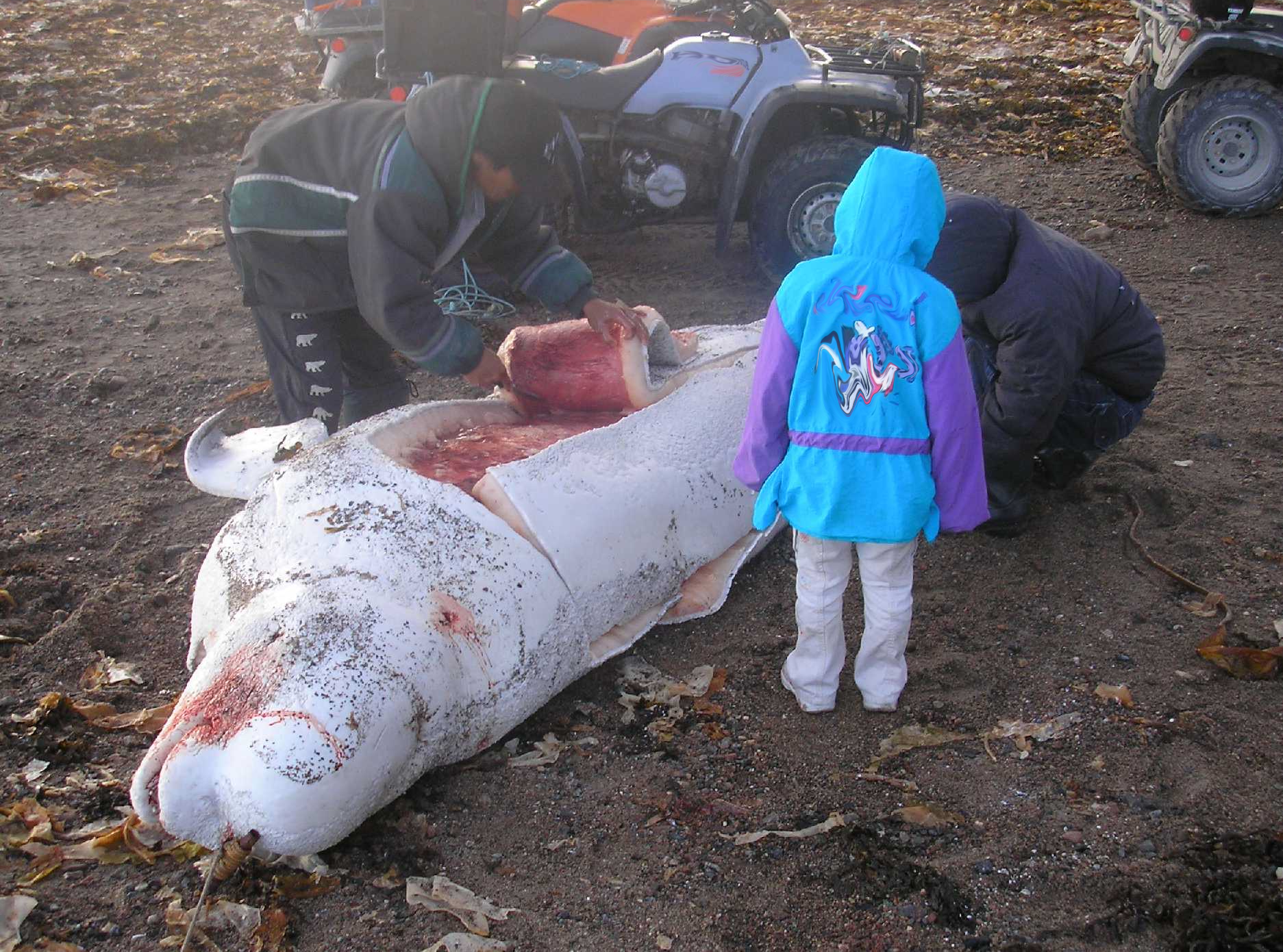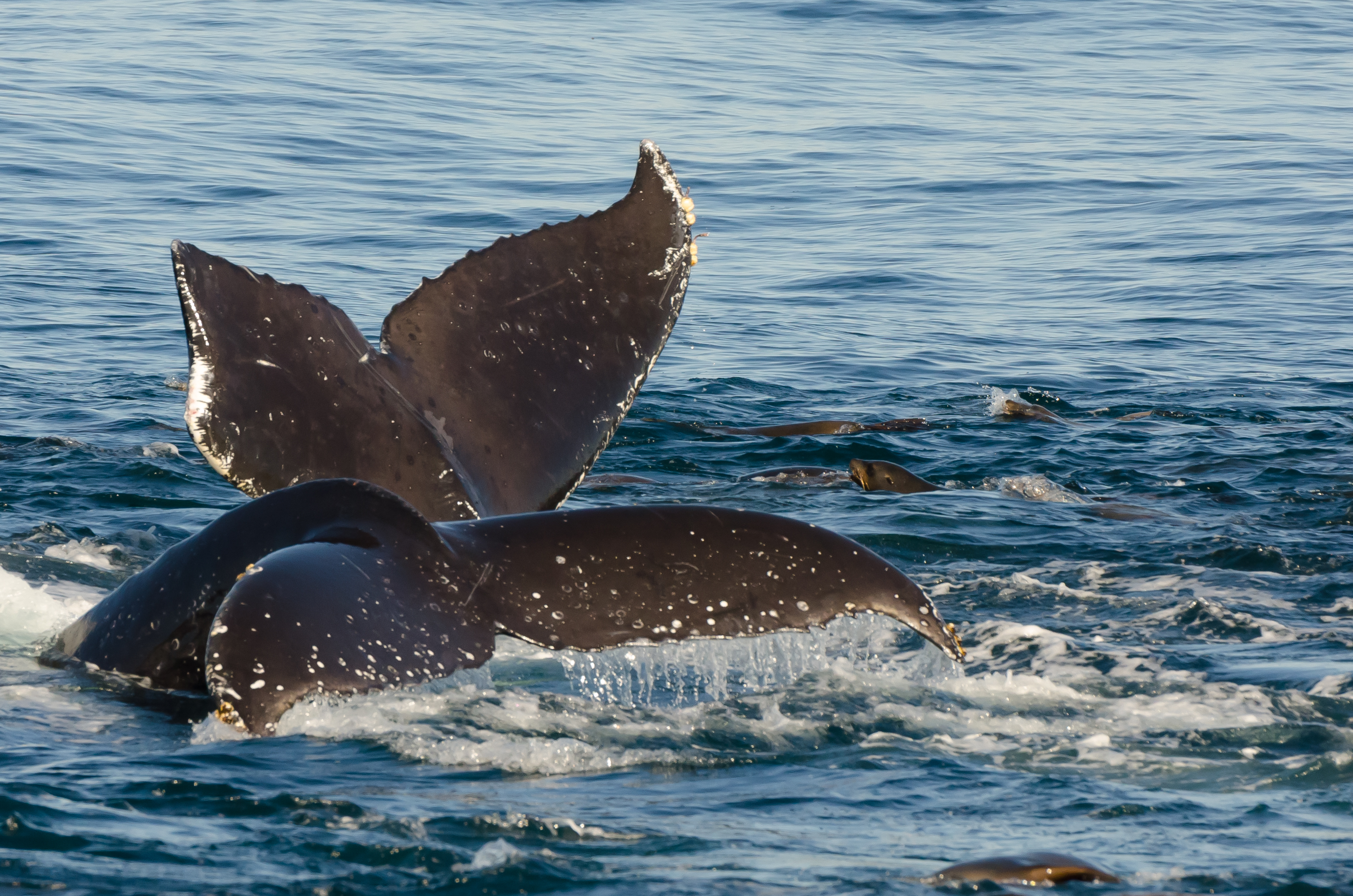|
Whaling
Whaling is the hunting of whales for their products such as meat and blubber, which can be turned into a type of oil that was important in the Industrial Revolution. Whaling was practiced as an organized industry as early as 875 AD. By the 16th century, it had become the principal industry in the Basque coastal regions of Spain and France. The whaling industry spread throughout the world and became very profitable in terms of trade and resources. Some regions of the world's oceans, along the animals' migration routes, had a particularly dense whale population and became targets for large concentrations of whaling ships, and the industry continued to grow well into the 20th century. The depletion of some whale species to near extinction led to the banning of whaling in many countries by 1969 and to an international cessation of whaling as an industry in the late 1980s. Archaeological evidence suggests the earliest known forms of whaling date to at least 3000 BC, practiced by the ... [...More Info...] [...Related Items...] OR: [Wikipedia] [Google] [Baidu] [Amazon] |
International Whaling Commission
The International Whaling Commission (IWC) is a specialised regional fishery management organisation, established under the terms of the 1946 International Convention for the Regulation of Whaling (ICRW) to "provide for the proper conservation of whale stocks and thus make possible the orderly development of the whaling industry". As the decision-making body of the convention, the IWC reviews and revises measures laid down in the "Schedule to the Convention", which govern the conduct of whaling throughout the world. These measures include: confer complete protection of certain species; designate specific areas as whale sanctuaries; set limits on the numbers and size of whales which may be taken; prescribe open and closed seasons and areas for whaling; and prohibit the capture of suckling calves and female whales accompanied by calves. The Commission also mandates the compilation of catch reports and other statistical and biological records, and is actively involved in whale res ... [...More Info...] [...Related Items...] OR: [Wikipedia] [Google] [Baidu] [Amazon] |
Whale Meat
Whale meat, broadly speaking, may include all cetaceans (whales, dolphins, porpoises) and all parts of the animal: muscle (meat), organs (offal), skin (muktuk), and fat (blubber). There is relatively little demand for whale meat, compared to farmed livestock. Commercial whaling, which has Whale conservation#Whaling debate, faced opposition for decades, continues today in very few countries (mainly Whaling in Iceland, Iceland, Whaling in Japan, Japan and Whaling in Norway, Norway), despite whale meat being eaten across Western Europe and Colonial history of the United States, colonial America previously. However, in areas where dolphin drive hunting and aboriginal whaling exist, marine mammals as food, marine mammals are eaten locally as part of a subsistence economy: the Faroe Islands, the Circumpolar peoples, circumpolar Arctic peoples (Inuit in Canada and Greenland, related Alaska Natives, native Alaskans, the Chukchi people of Siberia), other Native Americans in the United Stat ... [...More Info...] [...Related Items...] OR: [Wikipedia] [Google] [Baidu] [Amazon] |
Whale
Whales are a widely distributed and diverse group of fully Aquatic animal, aquatic placental mammal, placental marine mammals. As an informal and Colloquialism, colloquial grouping, they correspond to large members of the infraorder Cetacea, i.e. all cetaceans apart from dolphins and porpoises. Dolphins and porpoises may be considered whales from a formal, Cladistics, cladistic perspective. Whales, dolphins and porpoises belong to the order Cetartiodactyla, which consists of even-toed ungulates. Their closest non-cetacean living relatives are the hippopotamuses, from which they and other cetaceans diverged about 54 million years ago. The two parvorders of whales, baleen whales (Mysticeti) and toothed whales (Odontoceti), are thought to have had their Most recent common ancestor, last common ancestor around 34 million years ago. Mysticetes include four Neontology, extant (living) Family (biology), families: Balaenopteridae (the rorquals), Balaenidae (right whales), Cetotheriid ... [...More Info...] [...Related Items...] OR: [Wikipedia] [Google] [Baidu] [Amazon] |
Aboriginal Whaling
Aboriginal whaling or indigenous whaling is the hunting of whales by indigenous peoples recognised by either IWC (International Whaling Commission) or the hunting is considered as part of indigenous activity by the country. It is permitted under international regulation, but in some countries remains a contentious issue. (The hunting of smaller cetaceans is covered at Dolphin drive hunting.) It is usually considered part of the subsistence economy. In some places, whaling has been superseded by whale watching instead. This article deals with communities that continue to hunt; details about communities that have ended the practice may be found in History of whaling. International regulation Under the terms of the 1986 moratorium, the International Whaling Commission allows the activity to be carried out by aboriginal groups if it occurs on a subsistence basis, similar to subsistence fishing. This Aboriginal Subsistence Whaling is restricted to native peoples and others working ... [...More Info...] [...Related Items...] OR: [Wikipedia] [Google] [Baidu] [Amazon] |
Anti-whaling
Anti-whaling refers to actions taken by those who seek to end whaling in various forms, whether locally or globally in the pursuit of marine conservation. Such activism is often a response to specific conflicts with pro-whaling countries and organizations that practice commercial whaling and/or Whaling in Japan#Research whaling, research whaling, as well as with indigenous groups engaged in aboriginal whaling, subsistence whaling. Some anti-whaling factions have received criticism and legal action for extreme methods including violent direct action. The term ''anti-whaling'' may also be used to describe beliefs and activities related to these actions. History Anti-whaling activism has a short history compared to other forms of activism and environmental awareness. Early members of environmental organizations began protesting whale hunts around the world in the 20th century. These actions were in direct response to the global depletion of whale populations due to over-exploitati ... [...More Info...] [...Related Items...] OR: [Wikipedia] [Google] [Baidu] [Amazon] |
Cetacean
Cetacea (; , ) is an infraorder of aquatic mammals belonging to the order Artiodactyla that includes whales, dolphins and porpoises. Key characteristics are their fully aquatic lifestyle, streamlined body shape, often large size and exclusively carnivorous diet. They propel themselves through the water with powerful up-and-down movements of their tail, which ends in a paddle-like fluke, using their flipper-shaped forelimbs to steer. While the majority of cetaceans live in marine environments, a small number reside solely in brackish water, brackish or fresh water. Having a cosmopolitan distribution, they can be found in some rivers and all of Earth's oceans, and many species migrate throughout vast ranges with the changing of the seasons. Cetaceans are famous for cetacean intelligence, their high intelligence, complex social behaviour, and the enormous size of some of the group's members. For example, the blue whale reaches a maximum confirmed length of and a weight of 173 tonne ... [...More Info...] [...Related Items...] OR: [Wikipedia] [Google] [Baidu] [Amazon] |
Drift Whale
A drift whale is a whale, cetacean mammal that has died at sea and floated into shore. This is in contrast to a Cetacean stranding, beached or stranded whale, which reaches land alive and may die there or regain safety in the ocean. Most cetaceans that die, from natural causes or predators, do not wind up on land; most die far offshore and sink deep to become novel ecological zones known as whale falls. Some species that wash ashore are scientifically dolphins, i.e. members of the family Oceanic dolphin, Delphinidae, but for ease of use, this article treats them all as "drift whales". For example, one species notorious for mass strandings is the pilot whale, also known as "blackfish", which is taxonomically a dolphin. In historical sources, it is not always clear whether a given cetacean washed up alive or dead, but the term "drift whale" focuses on the benefits of its carcass – meat, blubber, fat, and other products – to the people who claimed it. Nowadays, when a dead whal ... [...More Info...] [...Related Items...] OR: [Wikipedia] [Google] [Baidu] [Amazon] |
Whale Watching
Whale watching is the practice of observing whales and dolphins (cetaceans) in their natural habitat. Whale watching is mostly a recreational activity (cf. birdwatching), but it can also serve scientific and/or educational purposes.Hoyt, E. 2009. Whale watching. In Encyclopedia of Marine Mammals, 2nd Edition (Perrin, W.F., B. Würsig and J.G.M. Thewissen, eds.) Academic Press, San Diego, CA., pp1219-1223. A study prepared for International Fund for Animal Welfare in 2009 estimated that 13 million people went whale watching globally in 2008. Whale watching generates $2.1 billion per annum in tourism revenue worldwide, employing around 13,000 workers.O’Connor, S., Campbell, R., Cortez, H., & Knowles, T., 2009, Whale Watching Worldwide: tourism numbers, expenditures and expanding economic benefits, a special report from the International Fund for Animal Welfare, Yarmouth MA, US, prepared by Economists at Large. http://www.ecolarge.com/work/whale-watching-worldwide/ The size a ... [...More Info...] [...Related Items...] OR: [Wikipedia] [Google] [Baidu] [Amazon] |
Whale Oil
Whale oil is oil obtained from the blubber of whales. Oil from the bowhead whale was sometimes known as train-oil, which comes from the Dutch word ''traan'' ("tear drop"). Sperm oil, a special kind of oil used in the cavities of sperm whales, differs chemically from ordinary whale oil: it is composed mostly of liquid wax. Its properties and applications differ from those of detergentized whale oil, and it was sold for a higher price. Source and use Emerging industrial societies used whale oil in oil lamps and to Soap#History, make soap. In the 20th century it was made into margarine. There is a misconception that commercial development of the petroleum industry and vegetable oils saved whales from extinction. In fact, the development of petroleum accelerated the whaling industry, which peaked in the 1960s. In the 21st century, with most countries having banned whaling, the sale and use of whale oil has practically ceased. Whale oil was obtained by boiling strips of blubber ha ... [...More Info...] [...Related Items...] OR: [Wikipedia] [Google] [Baidu] [Amazon] |
Dolphin Drive Hunting
Dolphin drive hunting, also called dolphin drive fishing, is a method of hunting Dolphin, dolphins—and occasionally other small Cetacea, cetaceans—by herding them toward the shore with boats, typically into a bay or onto a beach. Their escape is prevented by closing off the route to the open sea or ocean with boats and nets. Dolphins are hunted this way in several places around the world including the Solomon Islands, the Faroe Islands, Peru, and Japan, which is the most well-known practitioner of the method. In large numbers dolphins are mostly hunted for their whale meat, meat; some end up in dolphinariums. Despite the controversial nature of the hunt resulting in international criticism, and the possible health risk that the often polluted meat causes, tens of thousands of dolphins are caught in drive hunts each year. By country Faroe Islands Whaling in the Faroe Islands takes the form of beaching and slaughtering long-finned pilot whales. It has been practiced sin ... [...More Info...] [...Related Items...] OR: [Wikipedia] [Google] [Baidu] [Amazon] |
Whaling Ship
A whaler or whaling ship is a specialized vessel, designed or adapted for whaling: the catching or processing of whales. Terminology The term ''whaler'' is mostly historic. A handful of nations continue with industrial whaling, and one, Japan, still dedicates a single factory ship for the industry. The vessels used by aboriginal whaling communities are much smaller and are used for various purposes over the course of the year. The ''whale catcher'' was developed during the Steam-powered vesselage , and then driven by diesel engines throughout much of the twentieth century. It was designed with a harpoon gun mounted at its bow and was fast enough to chase and catch rorquals such as the fin whale. At first, whale catchers either brought the whales they killed to a whaling station, a settlement ashore where the carcasses could be processed, or to its factory ship anchored in a sheltered bay or inlet. With the later development of the slipway at the ship's stern, whale catcher ... [...More Info...] [...Related Items...] OR: [Wikipedia] [Google] [Baidu] [Amazon] |
Blubber
Blubber is a thick layer of Blood vessel, vascularized adipose tissue under the skin of all cetaceans, pinnipeds, penguins, and sirenians. It was present in many marine reptiles, such as Ichthyosauria, ichthyosaurs and plesiosaurs. Description Lipid-rich, collagen fiber-laced blubber comprises the Subcutaneous tissue, hypodermis and covers the whole body, except for parts of the appendages. It is strongly attached to the musculature and skeleton by highly organized, fan-shaped networks of tendons and ligaments, can comprise up to 50 per cent of the body mass of some marine mammals during some points in their lives, and can range from thick in dolphins and smaller whales, to more than thick in some bigger whales, such as Right whale, right and bowhead whales. However, this is not indicative of larger whales' ability to retain heat better, as the thickness of a whale's blubber does not significantly affect heat loss. More indicative of a whale's ability to retain heat is the wat ... [...More Info...] [...Related Items...] OR: [Wikipedia] [Google] [Baidu] [Amazon] |








